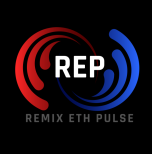**Highlight 1:** Perplexity launches the Deep Research tool, which performs excellently in multiple benchmark tests, even surpassing models like Google Gemini Thinking, providing enterprise-level AI research report generation capabilities at a low cost.
**Highlight 2:** Perplexity Deep Research excels in the “Humanity’s Last Exam” test, outperforming most models, but still slightly lags behind OpenAI.
**Highlight 3:** Perplexity Deep Research offers a free version, making it more attractive compared to OpenAI’s high subscription costs.
**Perplexity Launches Deep Research**
AI companies are racing to launch deep research tools! On February 14, Perplexity announced the release of its latest feature, “Deep Research,” joining the competition with Google and OpenAI. Google introduced a similar feature for its Gemini platform in December last year, while OpenAI launched its own research agent earlier this month, with all three companies using the same name: Deep Research.
The goal of Deep Research is to provide more in-depth answers and verifiable citations to meet the needs of professional users. In a blog post announcing Deep Research, Perplexity noted that its Deep Research feature “excels at a range of expert-level tasks—from finance and marketing to product research.”
Perplexity Deep Research is currently available in a web version, and the company stated that it will soon be added to its applications for Mac, iOS, and Android for mobile users.
To use Perplexity Deep Research, simply submit a query in Perplexity and select “Deep Research” from the drop-down menu, which will generate a detailed report. The generated results can be exported as a PDF file or displayed directly within Perplexity.
Perplexity stated that Deep Research “iteratively searches, reads documents, and considers what to do next, continuously refining its research plan as it gains more understanding of the subject area,” reportedly “similar to how humans research new topics.”
**Just Slightly Behind OpenAI! Free Users Can Conduct “Deep Queries” 5 Times a Day**
Perplexity AI also emphasized that its Deep Research performed well in the Humanity’s Last Exam (a benchmark test consisting of expert-level questions across various academic fields, where higher scores indicate closer proximity to “general artificial intelligence”), achieving a score of 21.1%, easily outperforming most other models such as Gemini Thinking (6.2%), Grok-2 (3.8%), and OpenAI’s GPT-4o (3.3%), with only OpenAI’s Deep Research (26.6%) scoring higher.

Perplexity Deep Research’s performance in the Humanity’s Last Exam, achieving a score of 21.1%.
Image / Perplexity
However, in the SimpleQA benchmark test, consisting of thousands of fact-based questions, Perplexity Deep Research achieved an accuracy of 93.9%, far exceeding the performance of other leading models.

Perplexity Deep Research achieved an accuracy of 93.9% in the SimpleQA benchmark test.
Image / Perplexity
But for the average consumer, it is important to note that using OpenAI’s Deep Research still requires a monthly subscription plan of $200 for the Pro version, even though OpenAI has indicated plans to expand to other subscription options. In contrast, Perplexity’s Deep Research is available for free, allowing free users to conduct five queries per day, while professional subscribers who pay $20 per month can enjoy 500 queries per day and faster processing speeds.
“Thankful for open source! We’re going to keep making this faster and cheaper. Knowledge should be universally accessible and useful. Not kept behind obscenely expensive subscription plans that benefit the corporates, but not in the interests of humanity!”
https://t.co/mtG4oZhl4z pic.twitter.com/M1yHtXJKUe — Aravind Srinivas (@AravSrinivas) February 14, 2025
**What Sets Deep Research Apart from Regular Search?**
To put it simply, the difference between deep search and regular search lies in the “amount of data the AI reads.” According to a test conducted by Digital Times, when asking Perplexity, “Please identify the top three ETFs by market capitalization in Taiwan and compare their stock selection logic and performance over the past year,” the differences were quite significant.
In a regular search, Perplexity indeed cited data to identify the three largest ETFs in Taiwan: Yuanta Taiwan 50 (0050), Cathay Sustainable High Dividend (00878), and Yuanta High Dividend (0056), but did not provide a discussion or data on “stock selection logic” and “performance over the past year.”

Perplexity’s regular search shows limitations in its ability to provide users with specific data.
Image / Perplexity
However, when switched to deep search, it generates a well-structured article, and it can be seen that Perplexity breaks down the user’s question into more detailed inquiries to aid content generation.

The results of deep search are evidently better.
Image / Perplexity
**Comparison of Perplexity, OpenAI, and Google**
When asked to “compare the three deep research products,” Perplexity outlined the differences in technology, pricing models, and performance across various use cases and topics, summarizing the differences as follows:
– **Perplexity AI:** Employs iterative search and reasoning capabilities, capable of quickly generating research reports, typically completed within 3 minutes. It excels in handling high-level professional tasks related to finance, marketing, and product research, suitable for preliminary research and quick information retrieval, applicable in areas such as market analysis and technology trend reports.
– **OpenAI Deep Research:** More suitable for enterprise-level applications, providing in-depth analysis but requiring longer time (5 to 30 minutes) to complete reports, making it better suited for handling deep and complex problems, applicable for intricate reasoning and validation in specialized fields.
– **Google Gemini AI:** Compared to the other two, less detailed information about its Deep Research feature has been publicly disclosed, but it has integrated similar deep research tools, potentially benefiting from seamless integration with existing productivity ecosystems, though specific application scenarios remain unclear.
**Further Reading:** Behind the Rapid Growth of Taiwan’s Unicorn Appier: “Only Two New Employees Added in a Year” as the AI Revolution Arrives!
This article has been collaboratively reproduced from Digital Times.
Editor: Li Hsien-Tai
Source: Perplexity, TechChurch

